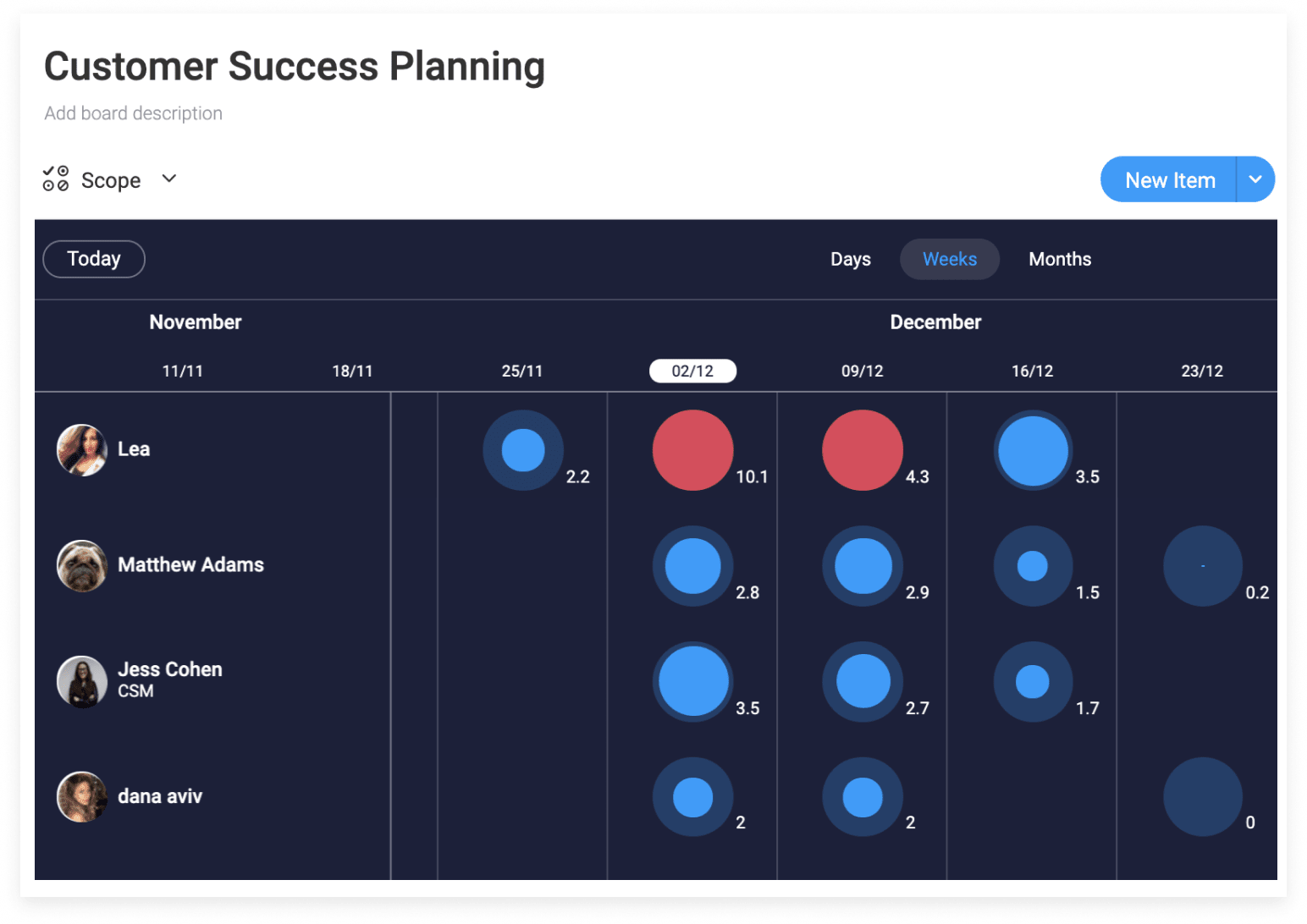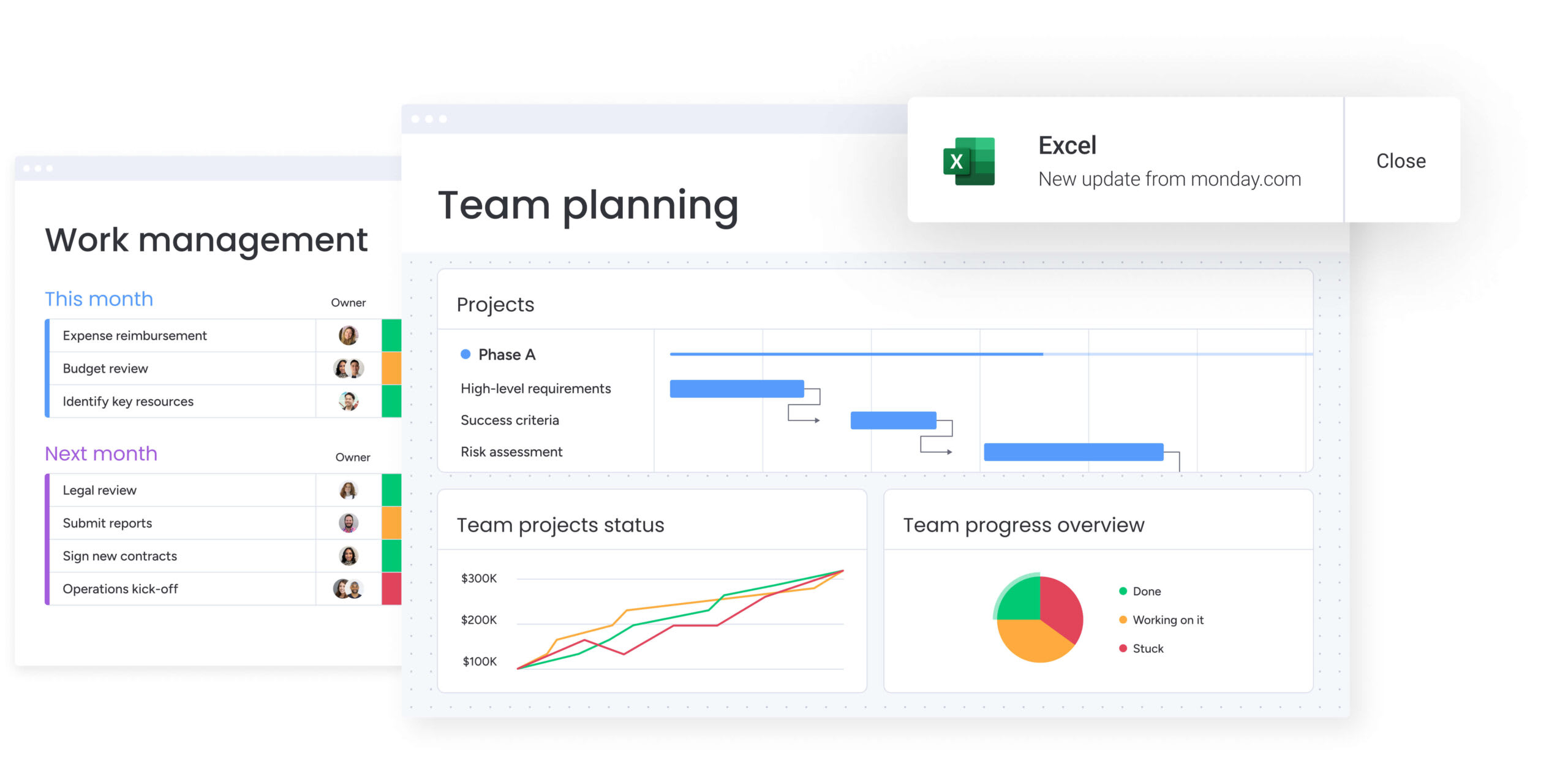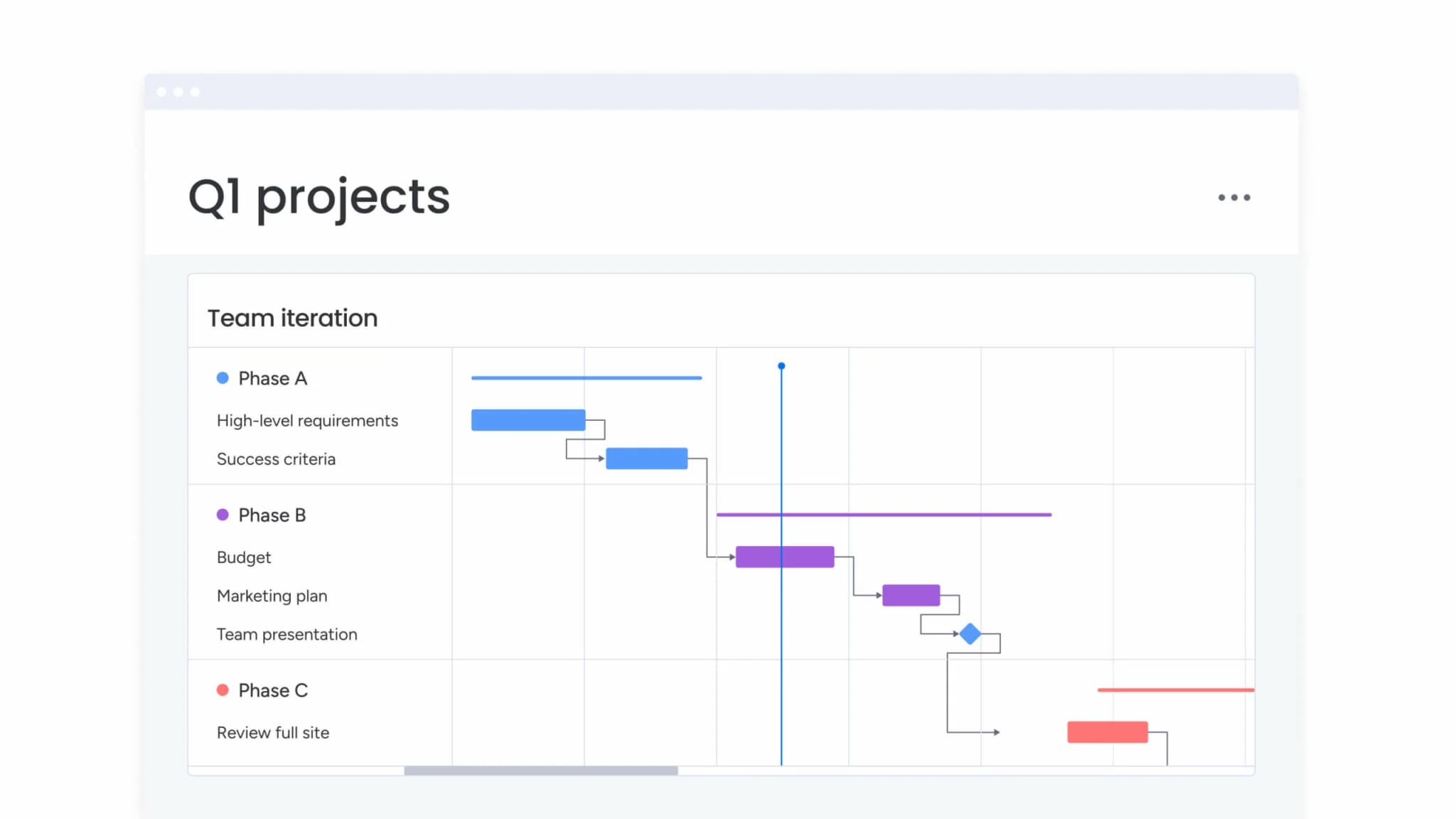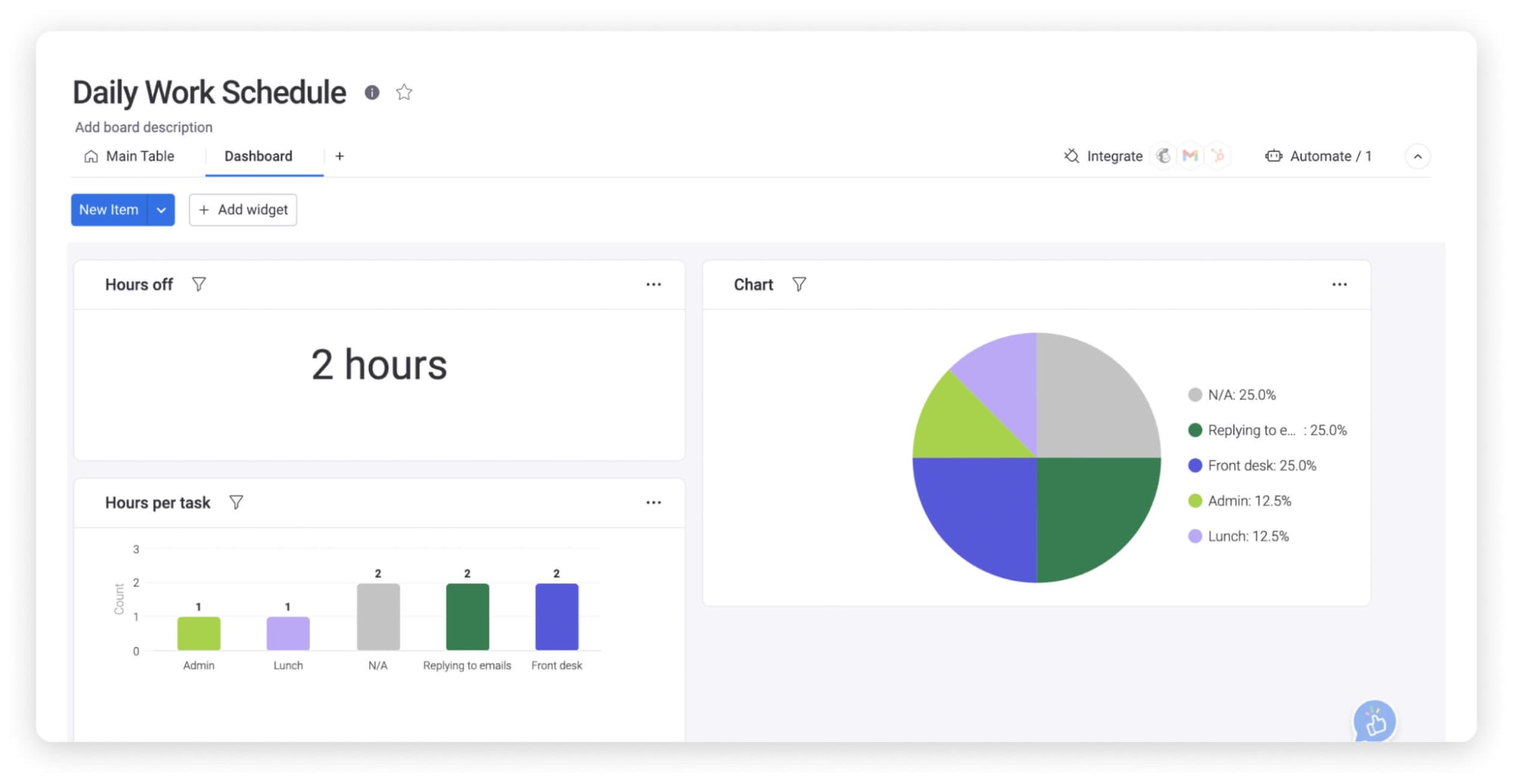Meeting ambitious goals means knowing exactly how much your team can handle. When workloads aren’t visible, projects slip, timelines stretch, and burnout becomes inevitable. Capacity planning gives teams a clear picture of what’s possible — so work stays balanced, predictable, and productive.
A capacity planning template turns that visibility into action. It consolidates availability, assignments, and priorities into one structured view, helping managers allocate resources fairly and plan new work with confidence. With the right framework, teams stop guessing and start operating with precision.
This guide explores practical capacity planning templates that help organizations align people, projects, and timelines. It also outlines how to implement them effectively, avoid common pitfalls, and build a process that scales from small teams to enterprise-level planning.
Key takeaways
- Maintain balanced utilization: aim for 70–85% capacity to leave room for unexpected work and prevent burnout.
- Account for all work types: include recurring tasks, meetings, and administrative duties that can consume up to 30% of the workweek.
- Match skills, not just schedules: align assignments based on expertise and complexity, recognizing that experience levels affect output.
- Enhance visibility with monday work management: use real-time views and AI-driven insights to replace static spreadsheets and improve forecasting accuracy.
- Start small before scaling: pilot your approach with one team to refine processes and gather feedback before expanding organization-wide.
What is a capacity planning template?
A capacity planning template is a structured document that tracks your team’s available time against upcoming work. It shows who’s available, what they’re working on, and how much bandwidth they have for new projects, forming the backbone of effective capacity planning.
This template should be considered as the visual map of your team’s workload. You can see at a glance whether someone is overloaded or has room for more assignments, which prevents the common problem of assigning work without knowing a team member’s actual capacity.
That last point is absolutely critical since employees are 70% more likely to burn out when faced with unreasonable time constraints.
The core components every capacity planning template needs include:
- Resource list: all team members with their roles and skills.
- Current commitments: active projects and time allocations.
- Available capacity: hours or percentage free for new work.
- Upcoming demand: future projects and resource needs.
5 types of capacity planning templates that drive results
Effective resource planning depends on choosing a template that aligns with how your team works and what you need to achieve. Each approach offers a different way to visualize workloads, balance priorities, and forecast capacity.
The templates below highlight how teams across departments and industries use structured planning to allocate time, prevent bottlenecks, and improve long-term efficiency.
Team capacity planning template
This template tracks a single department’s workload over one to three months. It shows each person’s assignments, skills, and available hours.
Marketing teams use these to balance campaign work across designers, writers, and strategists. IT departments track support tickets alongside project work to ensure coverage.
Project capacity planning template
Project templates outline resource needs for specific initiatives, mapping who is required, when, and where potential scheduling conflicts might occur. They help teams align people, timelines, and dependencies early to avoid last-minute reshuffling.
Construction managers use them to coordinate trades and equipment, while software teams plan sprints to match available development hours. In both cases, this structured approach mirrors a production schedule, ensuring steady progress without overcommitment or delays.
Sprint capacity planning template
Agile teams need templates that account for velocity and story points. These factor in ceremonies, code reviews, and other overhead that reduces actual development time.
The template prevents teams from committing to more work than they can realistically complete in a sprint.
Resource capacity planning template
Enterprise templates track resources across the entire organization. They provide executives with visibility into capacity constraints and hiring needs.
These comprehensive views help leadership make strategic decisions about capacity management and investment priorities.
Hybrid workforce capacity template
Modern teams include full-time employees, contractors, and remote workers across time zones. This template type accounts for different availability patterns and working arrangements, making workforce planning more strategic.
It’s essential for organizations managing distributed teams with varying schedules and employment types.
Try monday work management
How to implement your capacity planning template: 7 key steps
Getting your template up and running requires more than just copying a spreadsheet unfortunately.
Follow these simple steps to create a system your team will actually use, or consult our guide on how to write a project plan for expanded details.
Step 1: define your capacity metrics
Decide how you’ll measure capacity. Will you track hours per week, story points, or percentage availability?
Pick metrics that match how your team estimates and tracks work. Creative teams might use project counts while support teams track ticket volumes.
Step 2: inventory your resources
List everyone on your team with their skills, experience level, and typical availability. Include contractors and part-time workers.
Don’t forget to note specialized skills. A senior developer and junior developer aren’t interchangeable even if both are “available.”
Step 3: map current workload
Document all existing commitments including projects, recurring meetings, and administrative work. Most teams underestimate how much time goes to non-project activities.
Include time for email, status updates, and informal collaboration. Research shows that managers can spend as many as three to four hours per day on these ‘invisible’ administrative tasks.
Step 4: set capacity thresholds
Plan for 70-85% utilization, not 100%. People need buffer time for unexpected requests, thinking, and problem-solving.
Teams that plan for full utilization quickly burn out and can’t respond to urgent needs, highlighting the importance of having a business continuity plan template in place.
Step 5: create your template structure
Design a layout that’s clear, scannable, and easy to maintain. Include essential fields such as team member names, skills, current allocation, and remaining capacity to keep information consistent.
Work management platforms like monday work management make this process easier with visual workload charts that display capacity through color coding, helping teams spot and correct overallocation before it impacts delivery.
Step 6: test with a pilot team
Start small with one department. Gather feedback on what works and what’s missing before rolling out broadly.
Use this phase to refine your metrics and processes based on real usage patterns.
Step 7: scale across your organization
Finally, expand gradually while maintaining consistency. Provide training and support to ensure teams understand how to use the template effectively, a crucial step when 60% of employees believe better training is the key to improving change management.
Balance standardization for cross-team visibility with flexibility for department-specific needs.

Essential features every capacity planning template needs
An effective capacity planning template does more than store data — it turns that data into insight. The right features help teams see workload balance in real time, forecast demand accurately, and adjust resources before issues escalate.
The capabilities below outline what separates basic templates from systems that truly improve planning, communication, and decision-making across projects.
Real-time workload visualization
Visual indicators make capacity immediately understandable. Color coding shows who’s overloaded (red), near capacity (yellow), or available (green).
Charts reveal trends over time, helping you spot recurring bottlenecks or seasonal patterns. Visual formats also make it easier to communicate resource needs to stakeholders.
Automated capacity calculations
Manual math leads to errors and outdated information. Your template should automatically calculate remaining capacity as assignments change.
When someone’s availability shifts or a project extends, the template should immediately show the impact across all affected areas.
Skill-based resource matching
Track competencies and experience levels, not just availability. This prevents assigning complex work to team members who lack the necessary skills.
Include certifications, domain expertise, and proficiency levels to enable strategic resource allocation, and use a resource matrix to keep all skill sets organized.
Integration capabilities
A capacity planning template works best when it connects seamlessly with the systems your team already uses. Calendar integrations capture time off and meetings, while project management connections pull in real assignments to keep availability accurate.
Work management platforms such as monday work management streamline this process by syncing data across multiple sources automatically, reducing manual updates and ensuring plans always reflect current workloads.
Try monday work managementBenefits of using capacity planning templates in Excel
Excel remains a practical starting point for structured capacity planning. When set up effectively, templates provide visibility into workloads, highlight resource gaps, and create a data-driven foundation for smarter decisions.
The benefits below show how this structure improves balance, efficiency, and overall project delivery.
Prevent team burnout
You can spot overallocation before it impacts morale. When workload distribution is visible, managers can rebalance assignments proactively using resource leveling as needed.
Sustainable workloads als lead to higher retention and job satisfaction. Teams perform at their peak when capacity is respected, especially since employees who understand how success is measured are more likely to feel motivated.
Optimize resource allocation
Templates reveal hidden capacity and inefficient distributions. You might discover some team members are swamped while others have bandwidth for strategic projects.
This visibility enables smarter resource decisions that improve both productivity and project outcomes.
Improve project delivery rates
Realistic capacity planning leads to achievable deadlines. When you know actual availability upfront, you can set expectations appropriately.
Projects finish on time more often when resource constraints are visible during planning, which is a key principle of aggregate planning.
Enable data-driven decisions
Replace guesswork with concrete capacity data. Leadership can see exactly where additional resources would have the most impact.
This shift to evidence-based planning helps organizations invest wisely in people and projects through resource forecasting.

How to build a more effective capacity planning process
Creating a capacity plan is one thing — maintaining one that reflects reality is another. Small oversights can distort workload data, leading to burnout, missed deadlines, and poor forecasting. Addressing these common pitfalls ensures your process stays accurate, adaptable, and effective over time.
Ignoring non-project work
Leaving out routine activities leads to inaccurate capacity planning. Tasks like meetings and admin work may seem minor individually, but together they take up a significant portion of each week.
To create realistic availability, make sure to include:
- Meetings and communication: recurring check-ins, emails, and status updates.
- Training and development: onboarding, workshops, or skill-building sessions.
- Administrative tasks: reporting, documentation, and system updates.
Accounting for this “invisible work” ensures your template reflects true workload and prevents overallocation.
Overlooking skill variations
Not everyone with the same title has the same capabilities. A junior designer can’t substitute for a senior designer on complex projects.
Build skill levels and specializations into your template for more strategic assignments.
Setting unrealistic utilization targets
Planning for 100% utilization guarantees problems. Teams need slack time for urgent requests, creative thinking, and recovery.
Aim for 70-85% utilization to maintain sustainable performance levels.
Free capacity planning template vs paid solutions
Free Excel templates are a good starting point for basic capacity planning, but they can’t always keep up as teams scale or workflows become more dynamic.
The comparison table below highlights key differences in usability, collaboration, and long-term scalability.
| Aspect | Free Excel templates | Paid templates |
|---|---|---|
| Real-time updates | Manual only | Automatic |
| Team collaboration | Email attachments | Built-in sharing |
| Data accuracy | Depends on manual updates | Always current |
| Scalability | Limited | Unlimited |
| Integration | None | Exstensive |

Transform capacity planning with monday work management
Effective capacity planning requires flexibility as priorities shift and workloads evolve. Work management systems such as monday work management bring that adaptability to every team, supporting complex environments like capacity management for government agencies where precision and accountability are essential.
The features below show how monday work management enhances visibility, automation, and scalability across teams and departments.
Visualize team workload in real time
The workload view shows capacity through intuitive charts. Color coding instantly highlights who needs support and who has bandwidth for new work.
This real-time visibility transforms planning meetings. You can make assignment decisions based on current data, not last week’s spreadsheet.
Automate resource allocation
Automation turns capacity planning from a manual process into a dynamic, data-driven system. AI capabilities analyze patterns and help distribute work where it’s most effective.
- Smart assignment: match tasks to team members automatically based on skills, capacity, and availability.
- Pattern analysis: identify workload trends and suggest optimal resource distribution.
- AI Blocks: handle routine tasks such as categorizing requests or extracting project details, freeing managers to focus on higher-level decisions.
Leverage powerful AI capabilities
Our advanced AI tools transform how you plan and allocate resources. AI assistants help draft project briefs, summarize capacity reports, and identify potential bottlenecks before they impact delivery.
With monday AI, you can generate resource forecasts based on historical data and receive smart suggestions for workload balancing—turning capacity planning from reactive to predictive.
Scale capacity planning across teams
Enterprise features support organization-wide planning while maintaining team autonomy. Custom workflows ensure consistency without sacrificing flexibility.
Cross-account visibility lets you manage capacity across departments and locations from a single view.
Try monday work managementFrequently asked questions
How often should I update my capacity planning template?
Capacity planning templates need weekly updates to stay accurate, with comprehensive reviews monthly or when major projects change.
Can capacity planning templates work for remote teams?
Yes, capacity planning templates work well for remote teams when they account for time zones and different working schedules across locations.
What's the ideal team utilization rate for capacity planning?
The ideal utilization rate for capacity planning falls between 70-85%, leaving buffer time for unexpected work and professional development.
How do I track capacity for different skill levels in my template?
Track different skill levels by creating separate categories for junior, mid-level, and senior resources since their productivity varies significantly.
Should capacity planning templates use hours or story points?
Use hours for most business teams and story points for agile development teams, matching how each group naturally estimates work.
What's the difference between capacity planning and resource planning templates?
Capacity planning templates focus on time and workload distribution, while resource planning templates cover broader management including skills, costs, and strategic allocation.
 Get started
Get started 

